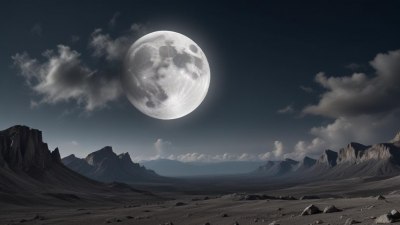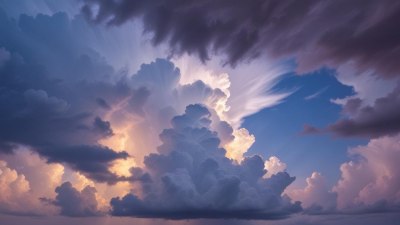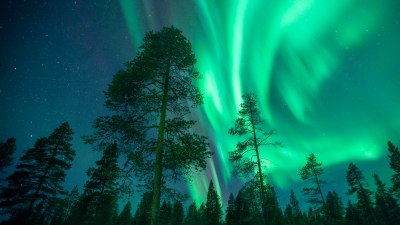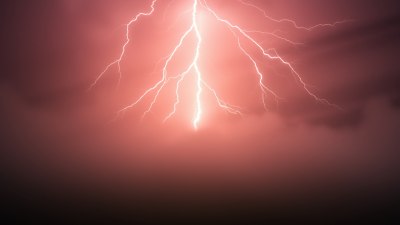How a Full Moon Affects the Weather Around You
Discover the fascinating impact of a full moon on weather patterns and natural phenomena.
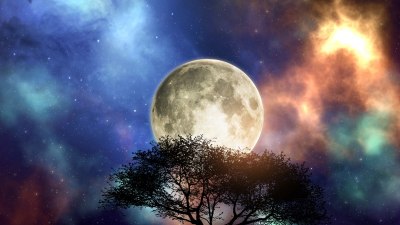
Image by kjpargeter on Freepik
The full moon has captivated humanity for millennia, inspiring myths, legends, and superstitions. Many people believe that the full moon can influence weather patterns and natural phenomena. In this article, we will explore how a full moon affects the weather around you, examining the underlying science and various observations that have been made throughout history.
The Moon and Its Phases
To understand the effects of a full moon on weather, it is essential to first grasp the moon's phases. The moon goes through a cycle of eight distinct phases each month, with the full moon being the fourth phase. A full moon occurs when the moon is on the opposite side of the Earth from the sun, fully illuminated in the night sky. This astronomical event is often associated with vibrant tides and heightened natural phenomena, which may also extend to weather events.
Gravity and Tides
The moon's gravitational pull is most commonly recognized for its effect on ocean tides. There are generally two high tides and two low tides each day due to the combined gravitational forces of the moon and the sun. During a full moon, the gravitational pull of the moon and sun aligns, resulting in what are known as “spring tides.” These tides are significantly higher and lower than average, leading to more drastic changes in water levels.
While tides impact oceans and large bodies of water, they can also influence the atmosphere. As the tides shift, the pressure changes in the atmosphere can affect weather patterns. When the full moon is present, it can correlate with increased storm activity, especially in coastal areas where the interaction of water and the atmosphere creates complex weather systems.
Impact on Weather Patterns
Some studies have suggested that the full moon can influence various weather patterns, including precipitation and temperature fluctuations. The alignment of the moon's gravitational pull can affect the atmosphere's stability, sometimes leading to increased chances of precipitation. Moreover, during a full moon period, there may be a tendency for an increase in cloudiness and atmospheric disturbances that could lead to storms in certain regions.
The Influence of Light
Another aspect of the full moon that may impact weather is the additional light it provides. The brightness of a full moon can potentially affect localized weather patterns. For instance, the extra light can warm the Earth's surface slightly at night, which may influence dew formation, evaporation rates, and surrounding temperatures. In rural areas, this increase in light can also impact nocturnal animals and their behaviors, which in turn may affect local ecosystems and, by extension, weather patterns.
Superstitions and Folklore
Throughout history, various cultures have associated the full moon with different weather phenomena. The ancient Greeks believed that a full moon could bring about torrential rains, while Native American tribes often saw a connection between the lunar cycle and seasonal changes. Some people believe that the full moon affects human behavior, leading to increased incidences of accidents, hospital visits, and crime—often referred to as the “lunar effect.”
Modern Research
Modern meteorological studies have attempted to quantify these beliefs scientifically. While anecdotal evidence abounds, scientific consensus remains elusive. Some researchers have noted correlations between full moons and certain weather phenomena, yet proving causation has proven challenging. For instance, a study conducted by the Australian Bureau of Meteorology found a slight increase in storm activity around the full moon, while other studies found negligible effects.
Full Moon and Climate Change
With climate change altering weather patterns globally, researchers are now investigating how these changes may influence the relationship between the full moon and weather. As temperatures rise and weather becomes more unpredictable, studying interactions between lunar phases and changing climate conditions could uncover important trends. Furthermore, understanding how these factors intertwine may assist in predicting extreme weather events more accurately.
Preparing for Weather Changes
While the impact of a full moon on the weather may not be as direct as other factors such as seasonal changes and geographic location, it is always wise to be prepared for changing conditions. Whether one truly believes in the lunar influence or not, keeping a close eye on weather forecasts around the time of a full moon can safeguard against unexpected storms and precipitation events. Meteorologists and weather enthusiasts alike should continue to monitor these lunar phenomena and their potential implications on local and global weather patterns.
The Cultural Impact of the Full Moon
The full moon's cultural significance extends beyond weather. It has inspired art, literature, and rituals across different societies. For example, festivals such as the Harvest Moon Festival celebrate the full moon's influence on agriculture and harvest cycles. In other traditions, people conduct ceremonies honoring the full moon in hopes of favorable weather and bountiful crops. These cultural practices often intertwine with the notion that the full moon holds special power over natural elements.
While the scientific evidence surrounding the full moon's effect on the weather may remain inconclusive, anecdotal observations and historical insights provide a fascinating lens through which to view the natural world. The fascinating interplay between the moon’s phase, the Earth's atmospheric conditions, and cultural beliefs creates a rich tapestry of understanding our environment. As humanity continues to explore the vastness of our universe and the scientific principles governing it, the full moon will undoubtedly remain a source of intrigue, inspiring curiosity about its role in weather patterns and beyond.



